Events
| Name | organizer | Where |
|---|---|---|
| MBCC “Doing Business with Mongolia seminar and Christmas Receptiom” Dec 10. 2025 London UK | MBCCI | London UK Goodman LLC |
NEWS
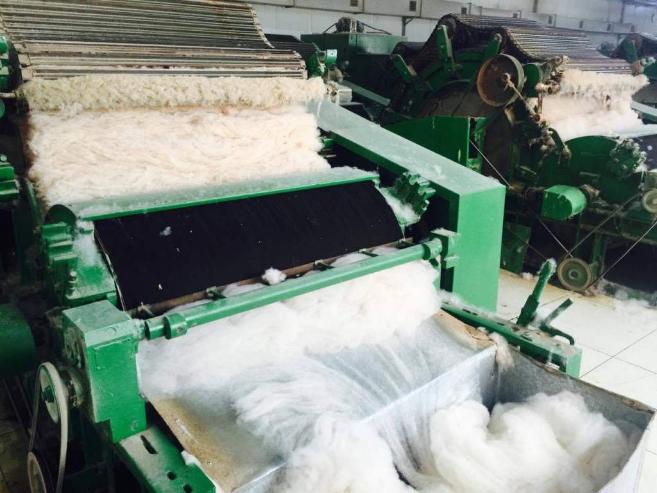
Cashmere and climate change threaten nomadic life www.bbc.com
Mongolia's vast grasslands cover about three-quarters of the country, where nomadic herdsmen have maintained traditions stretching back centuries. But this world is changing - fast.
About 70% of this once verdant land has now been damaged, mostly due to overgrazing. The main culprit is the country's estimated 27 million cashmere goats, which are farmed for their highly-prized wool.
Unlike the country's 31 million sheep, the goats dig out and eat the roots of the grass, making re-growth much harder.
Add climate change on top, and the United Nations warns that a quarter of Mongolia's grasslands have now turned to desert. The nation is, in fact, particularly vulnerable to rising temperatures, with a 2C increase over the past 70 years, higher than the world average.
"When I was child, I vividly remember the grasses would grow taller, and we would receive more rain," says Batmunkh, a herder in the Dornod province. He looks after 1,000 animals, 300 of which are cashmere goats.
The dilemma for Mongolia is that with global demand for cashmere continuing to rise strongly, how can the country earn more money from selling it, at the same time as reducing the industry's environmental impact?
Since Mongolia's peaceful transition from communism to democracy in 1990, the number of goats in the country have soared. Between 1999 and 2019 numbers increased almost fourfold from seven million to today's 27 million.
They are looked after by 1.2 million nomadic herders, some 40% of the country's population.
Once a rare luxury, fashion items made from cashmere are now readily available from most High Street and online fashion retailers in the UK, US and other developed countries. With global prices having risen more than 60% since the 1980s, the world cashmere clothing market was valued at $2.5bn (£2bn) in 2018, according to a UN report. This is projected to reach $3.5bn by the end of 2025.
Mongolia is the world's second-largest producer of raw cashmere after China, accounting for approximately a fifth of global supply. It is the country's third-largest export after copper and gold, and the total amount produced has risen sharply in recent years.
But while the country's cashmere is considered by many people to be the highest quality, much of it ends up in China where it is blended with Chinese wool. For a jumper, about four goats are needed, and last year's average price was 130,000 Mongolian tugriks ($47; £36) per kilo.
"It is very unfortunate that our own cashmere cannot be proudly sold on a global market as Mongolian cashmere," says Batmunkh. "Whatever we produce is being mixed up in China with other cashmere."
About 90% of Mongolian raw cashmere production is currently sold to Chinese brokers, who usually sell on to Chinese-owned processing companies in Mongolia, says Zara Morris-Trainor, an associate consultant at the Sustainable Fibre Alliance. The organisation works with brands such as Burberry, J Crew and M&S.
These Chinese processing companies typically wash and scour the raw cashmere, before exporting it to China for further processing and production of garments.
The hope of both the Mongolian government and the UN is that overgrazing can be reduced, and prices increased, by two initiatives. The first is by introducing a new system of traceability, and the second is by opening more plants in Ulaanbaatar that can do the entire processing work, so that the finished wool can be sold for a "made in Mongolia" premium.
To better ensure traceability, Batmunkh is now involved in a pilot initiative that uses blockchain technology - made famous as the tech behind the cryptocurrency bitcoin - to follow cashmere from the goats to new processing facilities in the capital, Ulaanbaatar.
Herders use a mobile phone app to register cashmere bales and attach a tracking tag.
The app was created by Toronto-based Convergence Tech, which is working with the UN in three provinces in north-east Mongolia. The idea is to limit production from overgrazed areas.
Chami Akeemana, the firm's chief executive, hopes it will provide traceability and authenticity. "There is very little transparency at present because of the chaos of the raw materials market, which is clouded by middlemen and market aggregators," he says.
However, Dr Troy Sternberg, an expert on Mongolia at Oxford University's School of Geography and the Environment, urges caution. He says that the tagging does not cover the whole supply, but typically only up to the first processing facility. Nor does he rule out people just removing tags and relabeling the cashmere.
He says it would be helpful if the big fashion brands got behind promoting more environmentally friendly cashmere.
"It'll be a challenge to roll out the tags over such a vast country," says Dr Sternberg. "But if brands worked harder to establish a Mongolian quality cashmere, like coffee sourcing in Colombia, that could really impact the herders and the grasslands."
Regarding building more cashmere processing plants in Ulaanbaatar, the Mongolian National Chamber of Commerce and Industry is now working with private sector partners.
Batmunkh is hoping that the two initiatives will be successful, despite the background problem of climate change.
"I do find the climate changing," he says. "And as nomads we heavily depend on nature."
The current lack of grass means that he has to buy more fodder for his goats, and overall he remains fearful for the long term future of the industry in Mongolia. The hotter weather also means that the goats produce wool of a lesser quality, as they grow fewer of the tightly packed fine fibres needed for them to keep warm during the winter months.
"I try to send all my kids to school with the money I make from selling cashmere," he says, which would give them a route out of the nomadic life.
"I am quite torn to think that our knowledge and heritage from our ancestors will die with us. On the other hand, I don't want to leave my children to risks and uncertainties."
...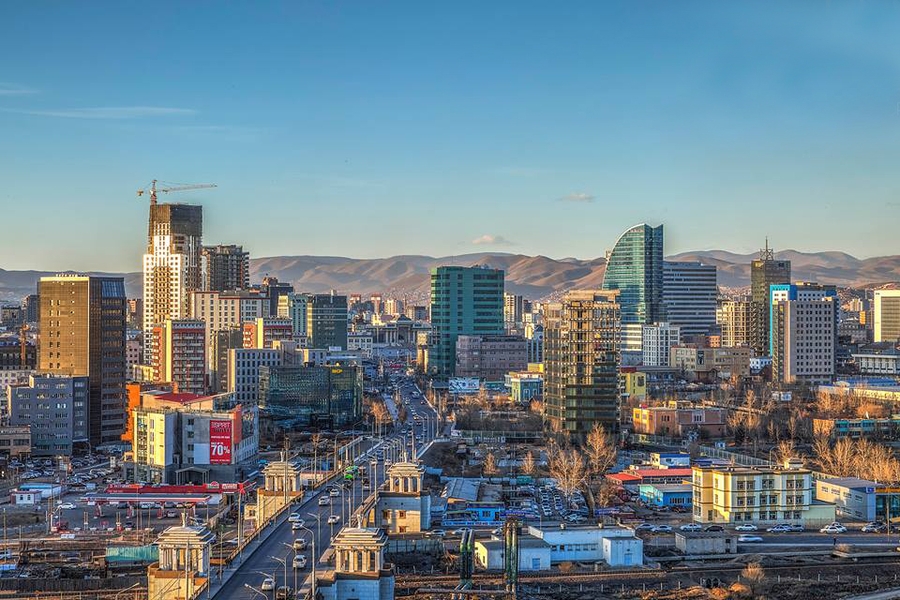
Inflation expectations remain positive www.zgm.mn
According to the inflation expectation survey, households expected inflation to be 5.6 percent, business people 4.4 percent and financial experts anticipated it to be 7.8 percent in the first quarter. Over 57 percent of the participants and 50 percent of entrepreneurs believe that inflation is lower than the 8 percent target. The Bank of Mongolia (BoM) conducts the survey among entrepreneurs, financial analysts, and households quarterly based on international experiences. The National Statistics Office (NSO) announced that inflation stands at 5.6 percent in its latest report. The economic index has been increased comparably from a year earlier. The majority of citizens expect the economic conditions to be better within the next 12 months. In other words, the inflation expectation survey indicated that people have affirmative hope for the economy. Household finance is expected to rise in the upcoming year. However, the Mongolian tugrik rate against the U.S dollar has adversely affected the household’s living expenses. Mongolia’s economy grew by 5.1 percent last year. Mining and public service sectors were have mainly played a key role in growth. Despite the fact, coal export, and trade have been restricted at the beginning of this year. Coal concentrate which accounts for 40 percent of total mining revenue was sold at MNT 5,700 per tons, dropped by 20 percent year on year. Moreover, the Extended Fund Facility program (EFF) of the International Monetary Fund (IMF) will expire in May and the parliamentary election will be held in June. It is increasing economic risks and uncertainty. Asian Development Bank (ADB) and the World Bank announced to review Mongolia’s economic expectations. The government and related officials are predicting the economy to soar based on the research.
...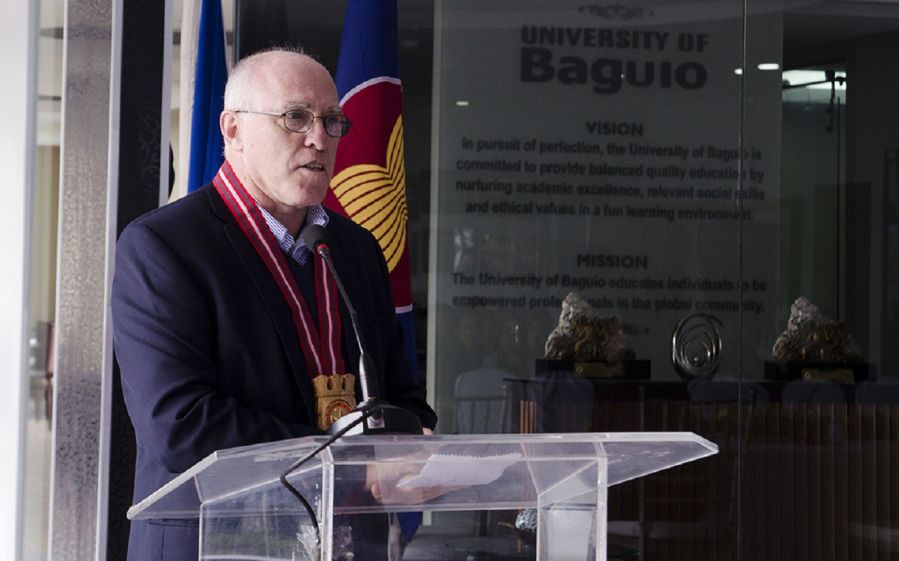
New U.S.-Mongolia partnership to expand access of local businesses to financial services www.montsame.mn
Ulaanbaatar /MONTSAME/. The U.S. government, through the United States Agency for International Development (USAID), today formally launched a five-year, MNT 41.3 billion ($15 million) Business Excellence for Sustainability and Transparency (BEST) project to help grow and diversify Mongolia’s economy by increasing lending to small and medium enterprises (SMEs) and improving economic governance and accountability.
This program is conducted with the assistance of the Government of Mongolia through the Ministry of Finance.
U.S. Ambassador to Mongolia Michael S. Klecheski and the Government of Mongolia Minister of Finance Ch. Khurelbaatar gave remarks at the launch of the new initiative, which will be implemented in partnership with Development Solutions in Ulaanbaatar and 12 aimags across the country.
“The U.S. government recognizes small and medium enterprises as important drivers of social opportunities and economic development,” said Ambassador Klecheski.
“Through this new project, we hope to expand local businesses’ access to financing and promote improved corporate governance so that Mongolian businesses can reach their full potential and contribute to the country’s economic self-reliance.”
Both parties emphasized how this cooperation will strengthen the U.S. – Mongolia Strategic Partnership as well as other U.S. government-funded bilateral development programs.
According to the National Statistics Office of Mongolia (NSO), at the end of 2017, 77% of businesses registered in Mongolia were classified as SMEs. These companies generated around 25% of Mongolia’s GDP and provided employment to more than half of the national workforce.
Since 2016, USAID support to SMEs has helped improve their access to credit and has facilitated linkages between financial institutions and 750 borrowers, multiplying their investments 20 times over and creating more than 600 new jobs.
This new project will augment USAID’s support of SMEs in Mongolia by working with government and private sector partners to foster an environment conducive to the growth of SMEs, including easier access to business financing, improved corporate governance, capacity-building training on transparency and accountability, and the provision of small grants to disadvantaged enterprises.
U.S. Embassy in Mongolia
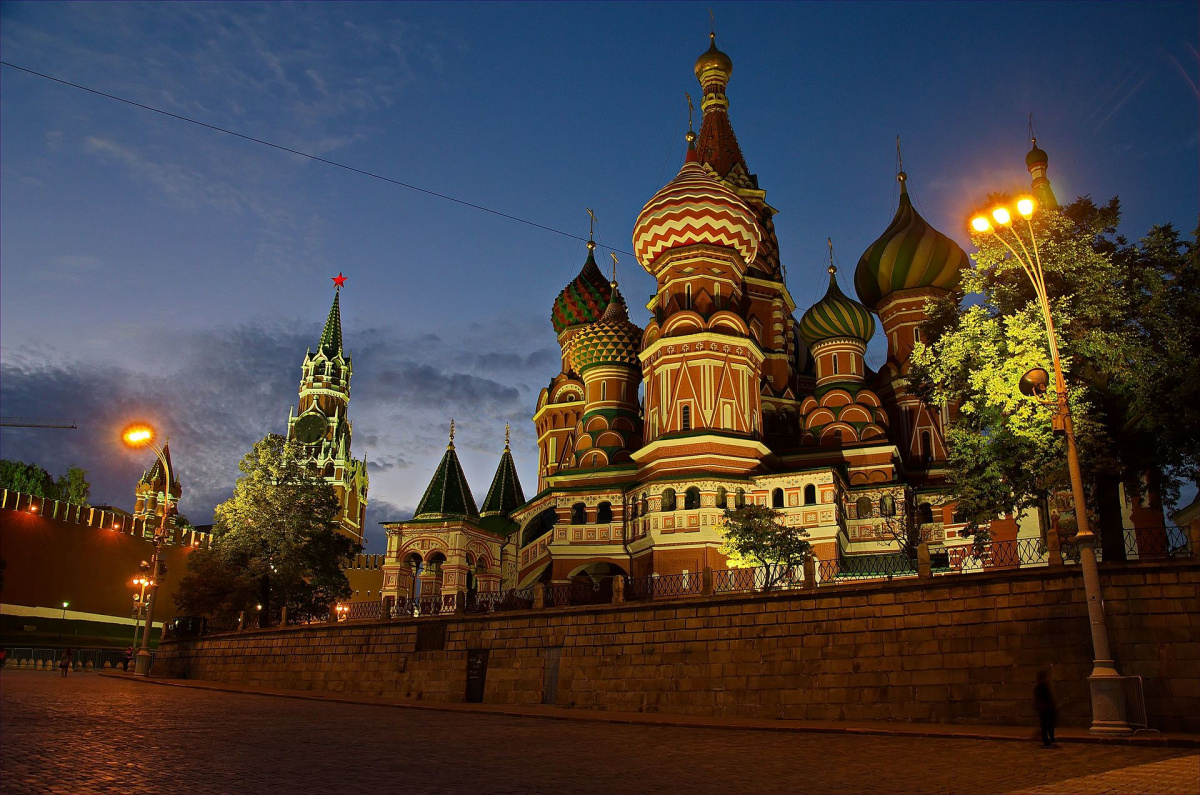
Mongolian soldiers to march at Moscow’s Victory Day Parade www.news.mn
Every year, Russia marks the end of the World War II with a great military parade of national pride in Moscow. The parade takes place on the very day on the signing of the German act of unconditional surrender to the victorious Allies in Berlin, precisely at midnight on 9 May 1945 (Russian time). This year, it will commemorate the 75th Diamond Jubilee.
For the special event, Mongolia will send 80 soldiers to Moscow to participating in the Russian military parade. The decision was announced at Cabinet meeting on 4 March.
Mongolian President Kh.Battulga has confirmed that he too will attend the Victory Day celebration in Moscow.
In addition to troops from the Russian Armed Forces, contingents from 20 foreign countries will also be on parade, groups from the Commonwealth of Independent States (CIS), as well as contingents from China, India, Serbia, France, the United Kingdom, the United States and Poland.
For the first time, 20 examples of the latest armoured and aviation equipment, including the Kurganets-25 infantry fighting vehicles and the latest S-300V4 and S-350 air defense systems, will take part in the parade which will involve 1,250 bandsmen, an estimated 16,000 personnel in the ground column, 4,500 in the mobile column of around 250 plus vehicles, and 600 air crew personnel for the 80-strong flypast.
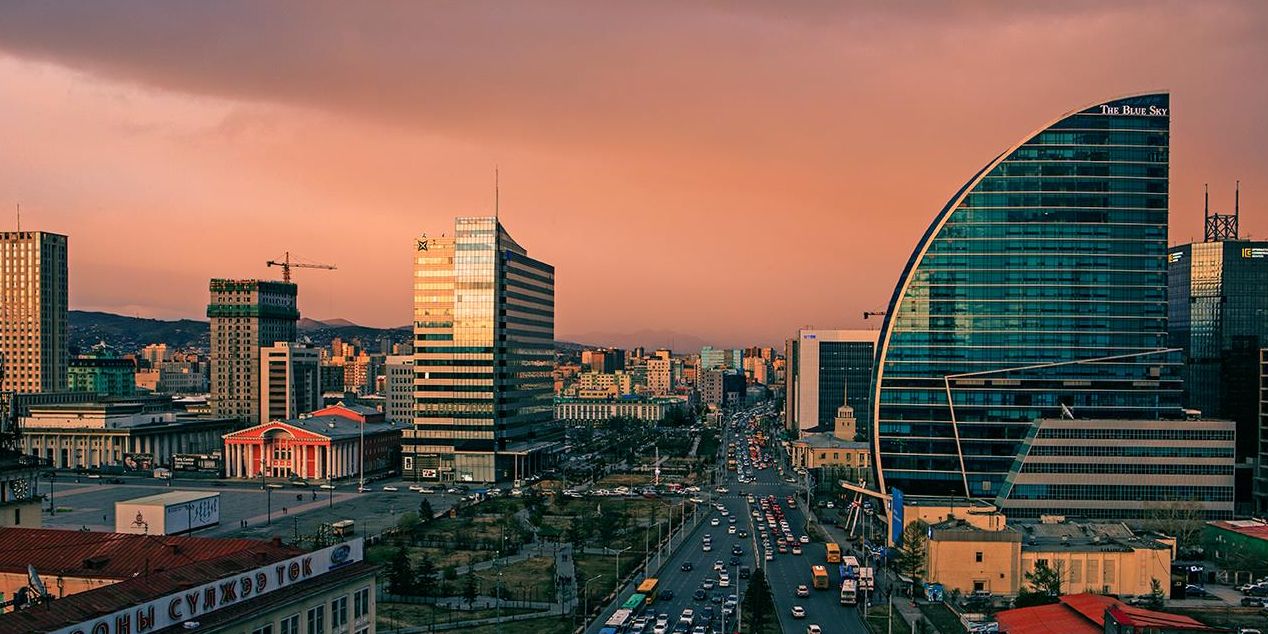
Mongolia's economy plunges as covid-19 threatens growth www.zgm.mn
Mongolia’s economy has been declining sharply due to COVID -19 outbreaks in China, according to World Economics. Also, global economic growth is projected to slow down since it did in 2009, the Organization for Economic Cooperation and Development (OECD) warned. At this time, there is an increasing need for prompt action by the Government and the Central Bank. The economy of Mongolia is highly dependent on the Chinese market. In particular, due to the proliferation of new types of coronaviruses, China has stopped business operations in some regions. This is causing an unprecedented stagnation in Mongolia’s market, assessed the World Economics. Indexes that show market expectations have been highlighted. The Sales Managers’ Indexes (SMI) fell to 35 units as of February 20, the lowest level of 39 months. It also noted that the business confidence index fell to the 38-month low and the sales growth index 59-month low. All indexes, except for the price index, have dropped below 50 units, according to World Economics. SMI provides the earliest monthly data on the speed and direction of economic activity in key growth areas of the world. The OECD reduced also the forecast for global growth this year from 2.9 percent to 2.4 percent. “In the future, as the situation worsens, large economies will need to take measures to support their health care and the economy,” it says. The World Trade Organization also said that COVID-19 might affect significantly on the global economy.
...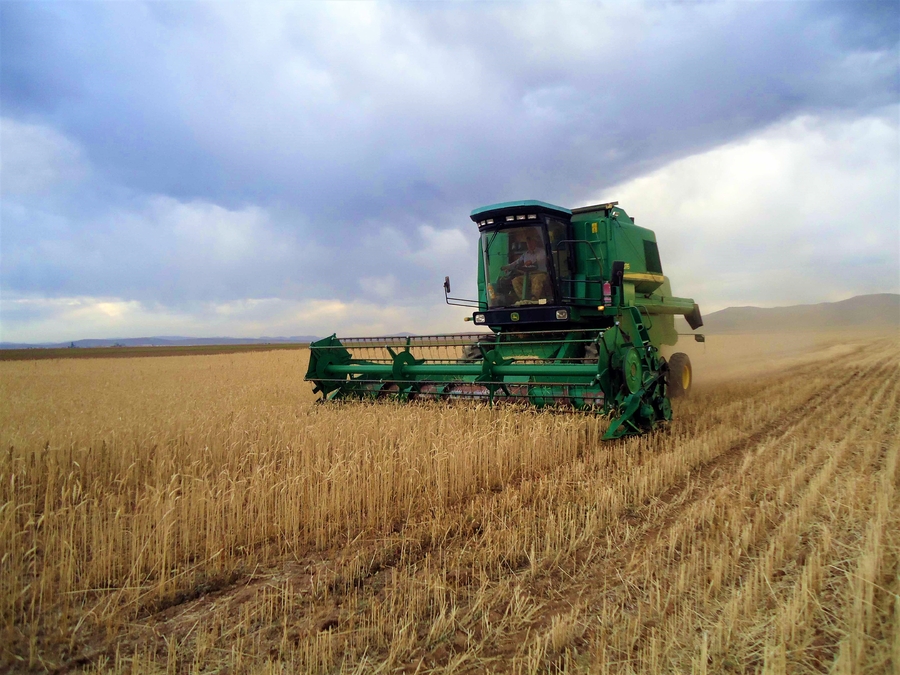
Angry Mongolian farmers protest against Russian wheat imports www.news.mn
Earlier yesterday (4 March), Mongolian farmers demonstrated outside the Ministry of Food, Agriculture and Light Industry protesting against the government’s decision to import 160 thousand tonnes of wheat from Russia. Previously, the ministry had announced that Mongolia could fully meet domestic flour demands after harvesting a total of 420 thousand tonnes of wheat.
According to S.Badral, a farmer from Selenge Province – which is where most of Mongolia’s cereal crops are grown – a tonne of wheat costs RUB 15,000 (USD 229) in Russia today. Mongolia is expected to import a tonne of wheat for MNT 700,000-800,000 (USD 253-289) from Russia. But, Mongolian farmers sold a tonne of wheat for MNT 500,000 (USD 181) last autumn.
Mongolia needs a total of 302 thousand tonnes of wheat in order to fully meet domestic demand for flour. In autumn, 2019, Mongolia harvested 407.6 thousand tonnes of wheat; 247.4 thousand tonnes was used for flour production, 10 thousand tonnes for brewing alcohol, 35 thousand tonnes for animal feed and 42 thousand for the crop reserve.

USAID to help Mongolia address the threat of COVID-19 www.montsame.mn
Ulaanbaatar /MONTSAME/ The U.S. Government announced on March 2 a commitment of USD 37 million in financing from the Emergency Reserve Fund for Contagious Infectious Diseases at the U.S. Agency for International Development (USAID) for 25 countries affected by novel coronavirus COVID-19 or at high risk of its spread. The U.S. Government is providing these funds to the World Health Organization, other multilateral institutions, and programs led by USAID's implementing partners. These are the first U.S. Government funds committed from the pledge of up to USD 100 million announced by the U.S. Department of State on February 7, 2020. Because an infectious-disease threat anywhere can be a threat everywhere, we call on other donors to contribute to the effort to combat COVID-19 as well.
Building on ongoing USAID and other U.S. Government investments to help prepare and respond to infectious diseases under the Global Health Security Agenda (GHSA), the new funding will help address the threat of COVID-19 in the following high-priority countries: The Islamic Republic of Afghanistan; the Republics of Angola, Indonesia, Iraq, Kazakhstan, Kenya, South Africa, Tajikistan, The Philippines, Turkmenistan, Uzbekistan, Zambia, and Zimbabwe; the People's Republic of Bangladesh; Burma; the Kingdom of Cambodia; the Federal Democratic Republic of Ethiopia; the Kyrgyz Republic; the Lao People's Democratic Republic; Mongolia; the Federal Republic of Nepal; the Federal Republic of Nigeria; the Islamic Republic of Pakistan; the Kingdom of Thailand; and the Socialist Republic of Vietnam.
Newly Announced Assistance
Of the total funding:
Funds that are going to the WHO will help the governments of currently affected or at-risk developing countries prepare their laboratories for large-scale testing for COVID-19, implement a public-health emergency plan for points of entry, activate case-finding and event-based surveillance for influenza-like illnesses, train and equip rapid-response teams, investigate cases and trace the contacts of infected persons, and adapt training materials for health workers on COVID-19.
Funds that are going through a broad range of other partners will support six broad areas of work: laboratory-strengthening; surveillance for, and rapid response to, infectious diseases; risk-communications and engagement with communities; public-health screening at points of entry; the prevention and control of infections in health facilities; and the management of cases of COVID-19. In addition, in response to the outbreak of COVID-19, which originated in Wuhan, in the People's Republic of China, USAID has reviewed, and responded to, requests from the governments of affected countries for donations from our emergency international stockpile of personal protective equipment (PPE). In close coordination with the WHO and the White House Coronavirus Task Force, this distribution of PPE - such as goggles, gowns, face shields/masks, and gloves- complements previous charitable donations from many U.S. private-sector entities.
Source: USAID Office of Press Relations

Skeletal Analysis Hints at Millet Consumption in Mongolia www.archaeology.org
JENA, GERMANY—According to a Cosmos Magazine report, an international team of researchers examined the ratios of stable nitrogen and carbon isotopes in collagen and dental enamel samples obtained from the remains of some 130 individuals who were buried in Mongolia between 4500 B.C. and A.D. 1300. The analysis suggests that during the Bronze Age, the Mongolian diet was based on milk and meat and supplemented with local plants. From about the third century B.C. to the late first century A.D., during the Xiongnu Empire, some people continued to eat the Bronze Age diet, while those living in political centers began to eat more millet-based foods. Grain consumption and thus the practice of agriculture appears to have continued to increase into the period of the Mongolian Empire of the Khans. “Namely, instead of roving hoards, these empires were supported by pastoralists and farmers practicing different subsistence strategies that provided strength in diversity,” explained Shevan Wilkin of the Max Planck Institute for the Science of Human History. To read about the tombs of Xiongnu nobles unearthed in Mongolia, go to "Tomb of the Silver Dragons," one of ARCHAEOLOGY's Top 10 Discoveries of 2019.
...
Mollaei cleared to compete for Mongolia at Tokyo 2020 after IOC approves nationality change www.insidethegames.biz
Iranian former world judo champion Saeid Mollaei has been cleared to represent Mongolia at Tokyo 2020 after his switch of allegiance was approved by the International Olympic Committee (IOC) Executive Board.
The IOC's ruling body gave the green light to Mollaei's change of nationality from refugee status to Mongolia here today.
Mollaei defected from Iran after being ordered to throw his semi-final at last year's World Judo Championships rather than set up a potential clash with Israeli rival Sagi Muki, in a case which led to the country being suspended by the International Judo Federation (IJF).
The 28-year-old was granted asylum in Germany after Iran threatened him and his family if he did not withdraw or deliberately lose his semi-final at the event in Tokyo in August, before he was granted permission to compete for Mongolia at major events by the IJF.
Mollaei, the 2018 world champion in the under-81 kilograms category, made his debut for Mongolia at the IJF World Judo Masters in Qingdao in December.
He competed briefly as a refugee after the IJF said he could not return to his country and amid concerns over the safety of his family.
Mollaei alleged he had been instructed to withdraw from the competition by Arash Miresmaeili and Reza Salehi Amiri, Presidents of the Iran Judo Federation and the National Olympic Committee of the Islamic Republic of Iran (NOCIRI) respectively.
It prompted the IJF to officially suspend the country and that sanction remains in place, meaning Iran may be barred from competing in the sport at Tokyo 2020.
Iranian athletes have been prohibited from competing in any sport against Israelis for years.
Iran's supreme leader, Ayatollah Ali Khamenei, has repeatedly praised athletes who have refused to face opponents from Israel.
Since its Islamic Revolution in 1979, Iran has refused to recognise Israel.
Despite the involvement of the NOCIRI, Iran has not been suspended by the IOC.
IOC President Thomas Bach claimed in January the NOCIRI had promised to "in future fully comply with the Olympic Charter".
Iran sent a similar letter to the IJF copied to the IOC, in May of last year, where the nation vowed to end its decades-long boycott against Israeli athletes.
Mollaei's change was one of 11 approved by the IOC's ruling body.
Among the others was cyclist Olga Zabelinskaya, who served an 18-month doping ban, from Russia to Uzbekistan.
The three-times Olympic medallist, nearly blocked from competing at Rio 2016 after the IOC attempted to ban any Russian athlete who had served a doping suspension, could represent her new country at Tokyo 2020.
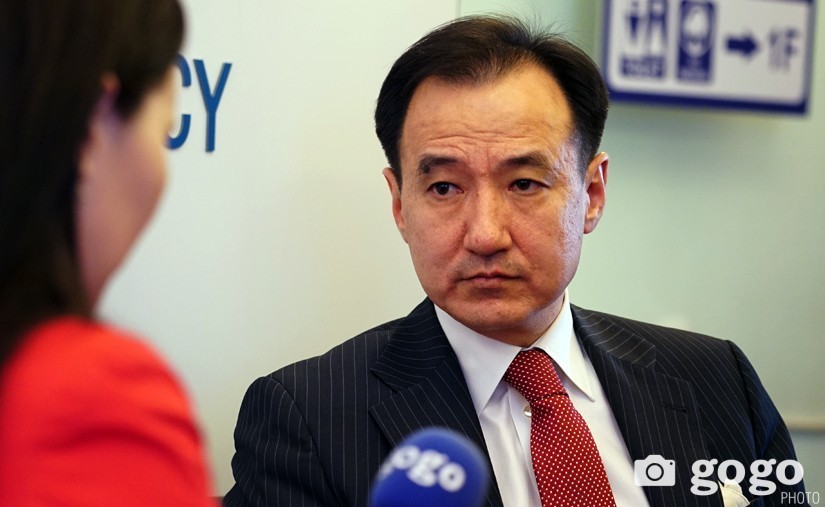
Roundup: Despite no cases, Mongolians prep for battle against COVID-19 www.xinhuanet.com
Mongolian Foreign Minister Damdin Tsogtbaatar told Xinhua in a recent interview that China has taken "highly organized measures" to contain the COVID-19 outbreak.
ULAN BATOR, March 3 (Xinhua) -- Mongolians have donated cash and supplies to support their government's efforts to prevent the spread of the coronavirus despite no cases of the disease having emerged in the country.
Public figures in Mongolia including singers, bands and wrestlers have donated money and much-needed prevention supplies to the country's Health Ministry, hospitals and other organizations.
Former sumo grand champion Dolgorsuren Dagvadorj recently provided 400 pieces of medical protective gear to the ministry.
A Mongolian herder from the southwestern province of Bayankhongor on Monday donated 10 sheep to the National Center for Communicable Disease of Mongolia to support the organization's anti-virus efforts.
"Every citizen's participation is important to prevent the spread of COVID-19. I am glad that the Mongolian people are not only consciously implementing, but also supporting the government's anti-coronavirus efforts," Sambuu Lambaa, former Mongolian health minister, told local media.
Meanwhile, since the COVID-19 outbreak in China, Mongolian leaders, members of the public, students and even children have been expressing solidarity with China in its battle against the novel coronavirus epidemic.
The Mongolian government has donated 200,000 U.S. dollars toward China's epidemic control efforts, and the country's President Khaltmaa Battulga, as the first foreign head of state to visit China since the COVID-19 outbreak, has offered a donation of 30,000 sheep to China during his recent one-day visit there.
Mongolian Foreign Minister Damdin Tsogtbaatar told Xinhua in a recent interview that China has taken "highly organized measures" to contain the COVID-19 outbreak.
To help China contain the coronavirus, other countries need to be equally responsible and take preventive measures, he said, adding that Mongolia has been following the recommendations of the World Health Organization to prevent an epidemic.
As more Mongolians wish to donate money and prevention supplies to China, the Mongolian government last month launched a nationwide campaign called "Emotional Support to an Eternal Neighbor."
During the campaign's launch, Mongolian Environment and Tourism Minister Namsrai Tserenbat highlighted China's great contribution to the social and economic development of Mongolia, underlining the necessity of supporting China in fighting COVID-19.
United Nations Resident Coordinator in Mongolia Tapan Mishra recently hailed the efforts of the Mongolian government to prevent the spread of the novel coronavirus.
"The Mongolian government has taken optimal measures to prevent the spread of the disease, setting a good example to the world," Tapan said at a recent meeting with Mongolian Deputy Prime Minister Ulziisaikhan Enkhtuvshin.
Mongolia has banned all public gatherings and provided its citizens with information on how to contain the disease's spread should an outbreak occur in the country. ■
...- «
- 1
- 2
- 3
- 4
- 5
- 6
- 7
- 8
- 9
- 10
- 11
- 12
- 13
- 14
- 15
- 16
- 17
- 18
- 19
- 20
- 21
- 22
- 23
- 24
- 25
- 26
- 27
- 28
- 29
- 30
- 31
- 32
- 33
- 34
- 35
- 36
- 37
- 38
- 39
- 40
- 41
- 42
- 43
- 44
- 45
- 46
- 47
- 48
- 49
- 50
- 51
- 52
- 53
- 54
- 55
- 56
- 57
- 58
- 59
- 60
- 61
- 62
- 63
- 64
- 65
- 66
- 67
- 68
- 69
- 70
- 71
- 72
- 73
- 74
- 75
- 76
- 77
- 78
- 79
- 80
- 81
- 82
- 83
- 84
- 85
- 86
- 87
- 88
- 89
- 90
- 91
- 92
- 93
- 94
- 95
- 96
- 97
- 98
- 99
- 100
- 101
- 102
- 103
- 104
- 105
- 106
- 107
- 108
- 109
- 110
- 111
- 112
- 113
- 114
- 115
- 116
- 117
- 118
- 119
- 120
- 121
- 122
- 123
- 124
- 125
- 126
- 127
- 128
- 129
- 130
- 131
- 132
- 133
- 134
- 135
- 136
- 137
- 138
- 139
- 140
- 141
- 142
- 143
- 144
- 145
- 146
- 147
- 148
- 149
- 150
- 151
- 152
- 153
- 154
- 155
- 156
- 157
- 158
- 159
- 160
- 161
- 162
- 163
- 164
- 165
- 166
- 167
- 168
- 169
- 170
- 171
- 172
- 173
- 174
- 175
- 176
- 177
- 178
- 179
- 180
- 181
- 182
- 183
- 184
- 185
- 186
- 187
- 188
- 189
- 190
- 191
- 192
- 193
- 194
- 195
- 196
- 197
- 198
- 199
- 200
- 201
- 202
- 203
- 204
- 205
- 206
- 207
- 208
- 209
- 210
- 211
- 212
- 213
- 214
- 215
- 216
- 217
- 218
- 219
- 220
- 221
- 222
- 223
- 224
- 225
- 226
- 227
- 228
- 229
- 230
- 231
- 232
- 233
- 234
- 235
- 236
- 237
- 238
- 239
- 240
- 241
- 242
- 243
- 244
- 245
- 246
- 247
- 248
- 249
- 250
- 251
- 252
- 253
- 254
- 255
- 256
- 257
- 258
- 259
- 260
- 261
- 262
- 263
- 264
- 265
- 266
- 267
- 268
- 269
- 270
- 271
- 272
- 273
- 274
- 275
- 276
- 277
- 278
- 279
- 280
- 281
- 282
- 283
- 284
- 285
- 286
- 287
- 288
- 289
- 290
- 291
- 292
- 293
- 294
- 295
- 296
- 297
- 298
- 299
- 300
- 301
- 302
- 303
- 304
- 305
- 306
- 307
- 308
- 309
- 310
- 311
- 312
- 313
- 314
- 315
- 316
- 317
- 318
- 319
- 320
- 321
- 322
- 323
- 324
- 325
- 326
- 327
- 328
- 329
- 330
- 331
- 332
- 333
- 334
- 335
- 336
- 337
- 338
- 339
- 340
- 341
- 342
- 343
- 344
- 345
- 346
- 347
- 348
- 349
- 350
- 351
- 352
- 353
- 354
- 355
- 356
- 357
- 358
- 359
- 360
- 361
- 362
- 363
- 364
- 365
- 366
- 367
- 368
- 369
- 370
- 371
- 372
- 373
- 374
- 375
- 376
- 377
- 378
- 379
- 380
- 381
- 382
- 383
- 384
- 385
- 386
- 387
- 388
- 389
- 390
- 391
- 392
- 393
- 394
- 395
- 396
- 397
- 398
- 399
- 400
- 401
- 402
- 403
- 404
- 405
- 406
- 407
- 408
- 409
- 410
- 411
- 412
- 413
- 414
- 415
- 416
- 417
- 418
- 419
- 420
- 421
- 422
- 423
- 424
- 425
- 426
- 427
- 428
- 429
- 430
- 431
- 432
- 433
- 434
- 435
- 436
- 437
- 438
- 439
- 440
- 441
- 442
- 443
- 444
- 445
- 446
- 447
- 448
- 449
- 450
- 451
- 452
- 453
- 454
- 455
- 456
- 457
- 458
- 459
- 460
- 461
- 462
- 463
- 464
- 465
- 466
- 467
- 468
- 469
- 470
- 471
- 472
- 473
- 474
- 475
- 476
- 477
- 478
- 479
- 480
- 481
- 482
- 483
- 484
- 485
- 486
- 487
- 488
- 489
- 490
- 491
- 492
- 493
- 494
- 495
- 496
- 497
- 498
- 499
- 500
- 501
- 502
- 503
- 504
- 505
- 506
- 507
- 508
- 509
- 510
- 511
- 512
- 513
- 514
- 515
- 516
- 517
- 518
- 519
- 520
- 521
- 522
- 523
- 524
- 525
- 526
- 527
- 528
- 529
- 530
- 531
- 532
- 533
- 534
- 535
- 536
- 537
- 538
- 539
- 540
- 541
- 542
- 543
- 544
- 545
- 546
- 547
- 548
- 549
- 550
- 551
- 552
- 553
- 554
- 555
- 556
- 557
- 558
- 559
- 560
- 561
- 562
- 563
- 564
- 565
- 566
- 567
- 568
- 569
- 570
- 571
- 572
- 573
- 574
- 575
- 576
- 577
- 578
- 579
- 580
- 581
- 582
- 583
- 584
- 585
- 586
- 587
- 588
- 589
- 590
- 591
- 592
- 593
- 594
- 595
- 596
- 597
- 598
- 599
- 600
- 601
- 602
- 603
- 604
- 605
- 606
- 607
- 608
- 609
- 610
- 611
- 612
- 613
- 614
- 615
- 616
- 617
- 618
- 619
- 620
- 621
- 622
- 623
- 624
- 625
- 626
- 627
- 628
- 629
- 630
- 631
- 632
- 633
- 634
- 635
- 636
- 637
- 638
- 639
- 640
- 641
- 642
- 643
- 644
- 645
- 646
- 647
- 648
- 649
- 650
- 651
- 652
- 653
- 654
- 655
- 656
- 657
- 658
- 659
- 660
- 661
- 662
- 663
- 664
- 665
- 666
- 667
- 668
- 669
- 670
- 671
- 672
- 673
- 674
- 675
- 676
- 677
- 678
- 679
- 680
- 681
- 682
- 683
- 684
- 685
- 686
- 687
- 688
- 689
- 690
- 691
- 692
- 693
- 694
- 695
- 696
- 697
- 698
- 699
- 700
- 701
- 702
- 703
- 704
- 705
- 706
- 707
- 708
- 709
- 710
- 711
- 712
- 713
- 714
- 715
- 716
- 717
- 718
- 719
- 720
- 721
- 722
- 723
- 724
- 725
- 726
- 727
- 728
- 729
- 730
- 731
- 732
- 733
- 734
- 735
- 736
- 737
- 738
- 739
- 740
- 741
- 742
- 743
- 744
- 745
- 746
- 747
- 748
- 749
- 750
- 751
- 752
- 753
- 754
- 755
- 756
- 757
- 758
- 759
- 760
- 761
- 762
- 763
- 764
- 765
- 766
- 767
- 768
- 769
- 770
- 771
- 772
- 773
- 774
- 775
- 776
- 777
- 778
- 779
- 780
- 781
- 782
- 783
- 784
- 785
- 786
- 787
- 788
- 789
- 790
- 791
- 792
- 793
- 794
- 795
- 796
- 797
- 798
- 799
- 800
- 801
- 802
- 803
- 804
- 805
- 806
- 807
- 808
- 809
- 810
- 811
- 812
- 813
- 814
- 815
- 816
- 817
- 818
- 819
- 820
- 821
- 822
- 823
- 824
- 825
- 826
- 827
- 828
- 829
- 830
- 831
- 832
- 833
- 834
- 835
- 836
- 837
- 838
- 839
- 840
- 841
- 842
- 843
- 844
- 845
- 846
- 847
- 848
- 849
- 850
- 851
- 852
- 853
- 854
- 855
- 856
- 857
- 858
- 859
- 860
- 861
- 862
- 863
- 864
- 865
- 866
- 867
- 868
- 869
- 870
- 871
- 872
- 873
- 874
- 875
- 876
- 877
- 878
- 879
- 880
- 881
- 882
- 883
- 884
- 885
- 886
- 887
- 888
- 889
- 890
- 891
- 892
- 893
- 894
- 895
- 896
- 897
- 898
- 899
- 900
- 901
- 902
- 903
- 904
- 905
- 906
- 907
- 908
- 909
- 910
- 911
- 912
- 913
- 914
- 915
- 916
- 917
- 918
- 919
- 920
- 921
- 922
- 923
- 924
- 925
- 926
- 927
- 928
- 929
- 930
- 931
- 932
- 933
- 934
- 935
- 936
- 937
- 938
- 939
- 940
- 941
- 942
- 943
- 944
- 945
- 946
- 947
- 948
- 949
- 950
- 951
- 952
- 953
- 954
- 955
- 956
- 957
- 958
- 959
- 960
- 961
- 962
- 963
- 964
- 965
- 966
- 967
- 968
- 969
- 970
- 971
- 972
- 973
- 974
- 975
- 976
- 977
- 978
- 979
- 980
- 981
- 982
- 983
- 984
- 985
- 986
- 987
- 988
- 989
- 990
- 991
- 992
- 993
- 994
- 995
- 996
- 997
- 998
- 999
- 1000
- 1001
- 1002
- 1003
- 1004
- 1005
- 1006
- 1007
- 1008
- 1009
- 1010
- 1011
- 1012
- 1013
- 1014
- 1015
- 1016
- 1017
- 1018
- 1019
- 1020
- 1021
- 1022
- 1023
- 1024
- 1025
- 1026
- 1027
- 1028
- 1029
- 1030
- 1031
- 1032
- 1033
- 1034
- 1035
- 1036
- 1037
- 1038
- 1039
- 1040
- 1041
- 1042
- 1043
- 1044
- 1045
- 1046
- 1047
- 1048
- 1049
- 1050
- 1051
- 1052
- 1053
- 1054
- 1055
- 1056
- 1057
- 1058
- 1059
- 1060
- 1061
- 1062
- 1063
- 1064
- 1065
- 1066
- 1067
- 1068
- 1069
- 1070
- 1071
- 1072
- 1073
- 1074
- 1075
- 1076
- 1077
- 1078
- 1079
- 1080
- 1081
- 1082
- 1083
- 1084
- 1085
- 1086
- 1087
- 1088
- 1089
- 1090
- 1091
- 1092
- 1093
- 1094
- 1095
- 1096
- 1097
- 1098
- 1099
- 1100
- 1101
- 1102
- 1103
- 1104
- 1105
- 1106
- 1107
- 1108
- 1109
- 1110
- 1111
- 1112
- 1113
- 1114
- 1115
- 1116
- 1117
- 1118
- 1119
- 1120
- 1121
- 1122
- 1123
- 1124
- 1125
- 1126
- 1127
- 1128
- 1129
- 1130
- 1131
- 1132
- 1133
- 1134
- 1135
- 1136
- 1137
- 1138
- 1139
- 1140
- 1141
- 1142
- 1143
- 1144
- 1145
- 1146
- 1147
- 1148
- 1149
- 1150
- 1151
- 1152
- 1153
- 1154
- 1155
- 1156
- 1157
- 1158
- 1159
- 1160
- 1161
- 1162
- 1163
- 1164
- 1165
- 1166
- 1167
- 1168
- 1169
- 1170
- 1171
- 1172
- 1173
- 1174
- 1175
- 1176
- 1177
- 1178
- 1179
- 1180
- 1181
- 1182
- 1183
- 1184
- 1185
- 1186
- 1187
- 1188
- 1189
- 1190
- 1191
- 1192
- 1193
- 1194
- 1195
- 1196
- 1197
- 1198
- 1199
- 1200
- 1201
- 1202
- 1203
- 1204
- 1205
- 1206
- 1207
- 1208
- 1209
- 1210
- 1211
- 1212
- 1213
- 1214
- 1215
- 1216
- 1217
- 1218
- 1219
- 1220
- 1221
- 1222
- 1223
- 1224
- 1225
- 1226
- 1227
- 1228
- 1229
- 1230
- 1231
- 1232
- 1233
- 1234
- 1235
- 1236
- 1237
- 1238
- 1239
- 1240
- 1241
- 1242
- 1243
- 1244
- 1245
- 1246
- 1247
- 1248
- 1249
- 1250
- 1251
- 1252
- 1253
- 1254
- 1255
- 1256
- 1257
- 1258
- 1259
- 1260
- 1261
- 1262
- 1263
- 1264
- 1265
- 1266
- 1267
- 1268
- 1269
- 1270
- 1271
- 1272
- 1273
- 1274
- 1275
- 1276
- 1277
- 1278
- 1279
- 1280
- 1281
- 1282
- 1283
- 1284
- 1285
- 1286
- 1287
- 1288
- 1289
- 1290
- 1291
- 1292
- 1293
- 1294
- 1295
- 1296
- 1297
- 1298
- 1299
- 1300
- 1301
- 1302
- 1303
- 1304
- 1305
- 1306
- 1307
- 1308
- 1309
- 1310
- 1311
- 1312
- 1313
- 1314
- 1315
- 1316
- 1317
- 1318
- 1319
- 1320
- 1321
- 1322
- 1323
- 1324
- 1325
- 1326
- 1327
- 1328
- 1329
- 1330
- 1331
- 1332
- 1333
- 1334
- 1335
- 1336
- 1337
- 1338
- 1339
- 1340
- 1341
- 1342
- 1343
- 1344
- 1345
- 1346
- 1347
- 1348
- 1349
- 1350
- 1351
- 1352
- 1353
- 1354
- 1355
- 1356
- 1357
- 1358
- 1359
- 1360
- 1361
- 1362
- 1363
- 1364
- 1365
- 1366
- 1367
- 1368
- 1369
- 1370
- 1371
- 1372
- 1373
- 1374
- 1375
- 1376
- 1377
- 1378
- 1379
- 1380
- 1381
- 1382
- 1383
- 1384
- 1385
- 1386
- 1387
- 1388
- 1389
- 1390
- 1391
- 1392
- 1393
- 1394
- 1395
- 1396
- 1397
- 1398
- 1399
- 1400
- 1401
- 1402
- 1403
- 1404
- 1405
- 1406
- 1407
- 1408
- 1409
- 1410
- 1411
- 1412
- 1413
- 1414
- 1415
- 1416
- 1417
- 1418
- 1419
- 1420
- 1421
- 1422
- 1423
- 1424
- 1425
- 1426
- 1427
- 1428
- 1429
- 1430
- 1431
- 1432
- 1433
- 1434
- 1435
- 1436
- 1437
- 1438
- 1439
- 1440
- 1441
- 1442
- 1443
- 1444
- 1445
- 1446
- 1447
- 1448
- 1449
- 1450
- 1451
- 1452
- 1453
- 1454
- 1455
- 1456
- 1457
- 1458
- 1459
- 1460
- 1461
- 1462
- 1463
- 1464
- 1465
- 1466
- 1467
- 1468
- 1469
- 1470
- 1471
- 1472
- 1473
- 1474
- 1475
- 1476
- 1477
- 1478
- 1479
- 1480
- 1481
- 1482
- 1483
- 1484
- 1485
- 1486
- 1487
- 1488
- 1489
- 1490
- 1491
- 1492
- 1493
- 1494
- 1495
- 1496
- 1497
- 1498
- 1499
- 1500
- 1501
- 1502
- 1503
- 1504
- 1505
- 1506
- 1507
- 1508
- 1509
- 1510
- 1511
- 1512
- 1513
- 1514
- 1515
- 1516
- 1517
- 1518
- 1519
- 1520
- 1521
- 1522
- 1523
- 1524
- 1525
- 1526
- 1527
- 1528
- 1529
- 1530
- 1531
- 1532
- 1533
- 1534
- 1535
- 1536
- 1537
- 1538
- 1539
- 1540
- 1541
- 1542
- 1543
- 1544
- 1545
- 1546
- 1547
- 1548
- 1549
- 1550
- 1551
- 1552
- 1553
- 1554
- 1555
- 1556
- 1557
- 1558
- 1559
- 1560
- 1561
- 1562
- 1563
- 1564
- 1565
- 1566
- 1567
- 1568
- 1569
- 1570
- 1571
- 1572
- 1573
- 1574
- 1575
- 1576
- 1577
- 1578
- 1579
- 1580
- 1581
- 1582
- 1583
- 1584
- 1585
- 1586
- 1587
- 1588
- 1589
- 1590
- 1591
- 1592
- 1593
- 1594
- 1595
- 1596
- 1597
- 1598
- 1599
- 1600
- 1601
- 1602
- 1603
- 1604
- 1605
- 1606
- 1607
- 1608
- 1609
- 1610
- 1611
- 1612
- 1613
- 1614
- 1615
- 1616
- 1617
- 1618
- 1619
- 1620
- 1621
- 1622
- 1623
- 1624
- 1625
- 1626
- 1627
- 1628
- 1629
- 1630
- 1631
- 1632
- 1633
- 1634
- 1635
- 1636
- 1637
- 1638
- 1639
- 1640
- 1641
- 1642
- 1643
- 1644
- 1645
- 1646
- 1647
- 1648
- 1649
- 1650
- 1651
- 1652
- 1653
- 1654
- 1655
- 1656
- 1657
- 1658
- 1659
- 1660
- 1661
- 1662
- 1663
- 1664
- 1665
- 1666
- 1667
- 1668
- 1669
- 1670
- 1671
- 1672
- 1673
- 1674
- 1675
- 1676
- 1677
- 1678
- 1679
- 1680
- 1681
- 1682
- 1683
- 1684
- 1685
- 1686
- 1687
- 1688
- 1689
- 1690
- 1691
- 1692
- 1693
- 1694
- »






